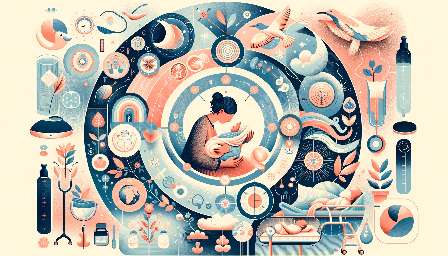Childbirth is a miraculous journey that involves the physical and emotional experiences of labor. Understanding the physiological and emotional aspects of this process can help expectant parents and birth professionals navigate the stages of labor with knowledge and empathy.
Physiological Perspective
The physiological journey of labor begins with the onset of contractions, marking the start of the first stage of labor. This stage is characterized by the cervix thinning and opening to allow the baby to move from the uterus into the birth canal. As labor progresses, contractions become stronger and more frequent, working to push the baby downward. The second stage of labor commences when the cervix is fully dilated, and it culminates in the birthing of the baby. The final stage of labor involves the delivery of the placenta.
From a physiological perspective, the intricate coordination of uterine contractions, cervical changes, and pelvic floor dynamics plays a vital role in the progress of labor. Hormonal fluctuations, such as increased oxytocin and adrenaline levels, also influence the physiological journey of labor, impacting the intensity and duration of contractions. Understanding the physical mechanisms at play during labor empowers individuals to appreciate the complexity of the birthing process.
Emotional Perspective
Childbirth is not only a physical event but also an emotional and transformative journey. The emotional perspective of labor encompasses a myriad of feelings, ranging from excitement and anticipation to anxiety and fear. Expectant parents may experience a mix of emotions as they navigate the uncertainties and challenges associated with labor.
Support from partners, family members, and birth professionals can significantly impact the emotional experience of labor. Creating a supportive and nurturing environment during childbirth can help alleviate anxiety and promote a sense of security for the laboring individual. The emotional journey of labor often involves moments of empowerment, vulnerability, and deep connection as new life enters the world.
Connection to Stages of Labor
The physiological and emotional perspectives of labor are closely intertwined with the stages of labor, which are commonly categorized into three phases: early labor, active labor, and transitional labor. Understanding these stages can provide insight into the progression of labor and the corresponding emotional experiences.
- Early Labor: This stage is characterized by mild to moderate contractions that help prepare the cervix for dilation. From an emotional perspective, expectant parents may feel a mix of excitement and apprehension as they anticipate the onset of active labor.
- Active Labor: During this phase, contractions intensify, and the cervix continues to dilate. Emotionally, individuals may experience increased focus and determination as they transition into the peak of labor.
- Transitional Labor: The final phase involves the completion of cervical dilation and the imminent arrival of the baby. Emotionally, this stage may bring a mix of exhaustion, exhilaration, and a profound sense of readiness to meet the newborn.
Understanding Childbirth
Childbirth represents a remarkable convergence of physiological processes and emotional experiences. Recognizing the interconnected nature of the physiological and emotional perspectives of labor can foster a deeper appreciation for the transformative journey of bringing new life into the world.
By exploring the stages of labor and childbirth from both a physiological and emotional standpoint, individuals can gain a holistic understanding of the multifaceted nature of labor, ultimately leading to greater empathy and support for those undergoing the awe-inspiring journey of childbirth.


